Preventing The Spread Of Infections: Best Practices For Medical Cleaning
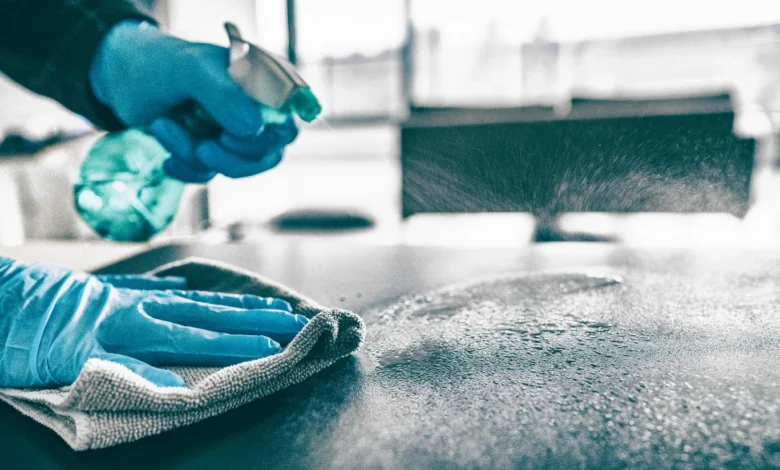
Over the years, medicine has evolved significantly, not only in terms of research but also in terms of advancement in technology. Various practices are followed in and around medical facilities to simplify work for the betterment of society. Cleaning is one of the most critical aspects when it comes to medicine.
Maintaining cleanliness is a crucial element that requires regulation, not only for the benefit of patients but also for an efficient workflow.
This article will explore medical cleaning services and their role in enhancing the work environment.
It’s More Than Cleaning
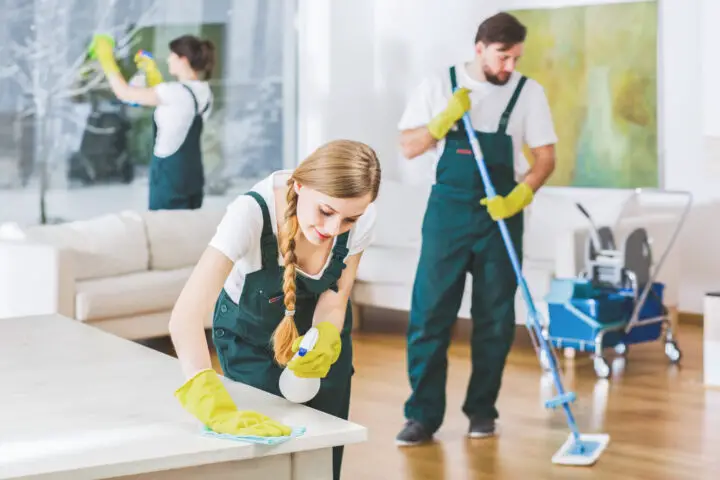
When it comes to cleaning healthcare areas, it’s about more than just cleaning the site. It’s about effective infection control and ensuring it is not spreading to anyone. Healthcare organizations have a demographic of all kinds of people, ranging from different age groups to diseases.
It’s not just cleaning; it is practically dealing with a life-death situation daily. Maintaining their workflow and habits while providing medical cleaning services is crucial.
Chemical Sensitivity and Equipment
Before anything, staff should wear protective gear containing gloves, masks, and a hair cap.
All the cleaning equipment, from solutions to rags and even large equipment, should be stored and used in a friendly manner. As patients of all kinds are present in these areas, there’s a high chance someone is highly allergic to chemicals and sensitive to certain smells, which can worsen the situation. Patient rooms and bathrooms are to be cleaned thoroughly.
Dirty dozen areas (areas that go unnoticed), such as shelves and under drawers, are to be cleaned with dusters. Industry-used R solutions are widespread.
R2 is for hard surface cleaning (all-purpose), R3 for mirrors and glass, R4 for furniture, R5 is room freshener, and R6 is a toilet and bowl cleaner.
Not just the areas but also the staff should be groomed, uniformly dressed, and trained. Workers should know the proportion of chemicals and, essentially, how to store them so accidents don’t happen. If medical cleaning services are outsourced, they should be made aware of the organization’s policies.
Checklist And Policies Should Be Updated On Time
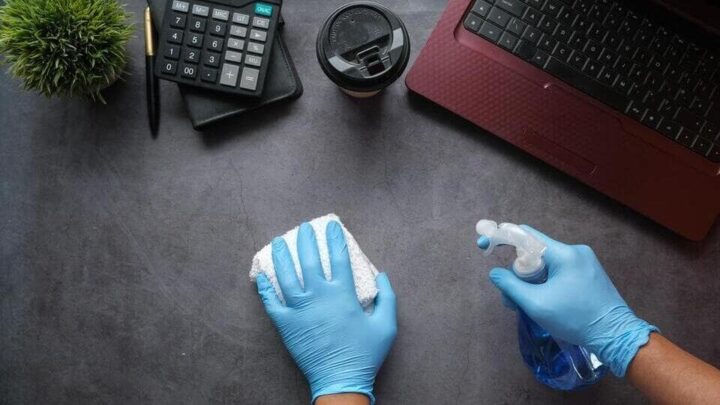
An area inventory list should be prepared and handed to the staff with details on cleaning areas and special instructions for a site or patient. Duty roosters should be made and supervised so they are fulfilled.
As a community, you should update your policies from time to time to make everyone aware of them. Make sure to notify the required people of the changed terms so they adhere to them.
Sustainable practices should be encouraged by using appliances and chemicals that are environmentally friendly. Training for the staff to demonstrate how to dispose of these chemicals ethically should be shown.
In a healthcare setting, preventing the spread of infections is of utmost importance. Medical cleaning plays a vital role in reducing the risk of infections and maintaining a safe environment for patients, staff, and visitors. In this article, we will explore the best practices for medical cleaning that can help prevent the spread of infections.
Understanding the Importance of Medical Cleaning:
Medical cleaning goes beyond regular cleaning practices. In healthcare facilities, there is a constant presence of infectious microorganisms that can pose a threat to vulnerable individuals. Proper cleaning and disinfection protocols are essential to minimize the transmission of pathogens and maintain a sterile environment.
Training and Education:
Medical cleaning staff should undergo comprehensive training on infection control protocols. This includes understanding different cleaning techniques, proper use of cleaning agents and disinfectants, and the importance of personal protective equipment (PPE). Ongoing education and regular updates on new cleaning procedures and products are also crucial to ensure the staff is well-informed and equipped to handle evolving challenges.
Adherence to Standard Operating Procedures (SOPs):
Healthcare facilities should establish clear and detailed standard operating procedures (SOPs) for medical cleaning. These SOPs should cover all aspects of cleaning, including surface cleaning, equipment cleaning, waste management, and laundry procedures. SOPs should be easily accessible, regularly reviewed, and updated to reflect the latest guidelines from reputable health organizations.
Use of Appropriate Cleaning Agents and Disinfectants:
Selecting the right cleaning agents and disinfectants is crucial for effective medical cleaning. Different surfaces and equipment may require specific products to ensure optimal disinfection. It is essential to follow manufacturer instructions for dilution ratios, contact times, and application methods. Using EPA-registered disinfectants is recommended, as they have been tested and proven effective against a wide range of pathogens.
Cleaning Frequencies and Schedules:
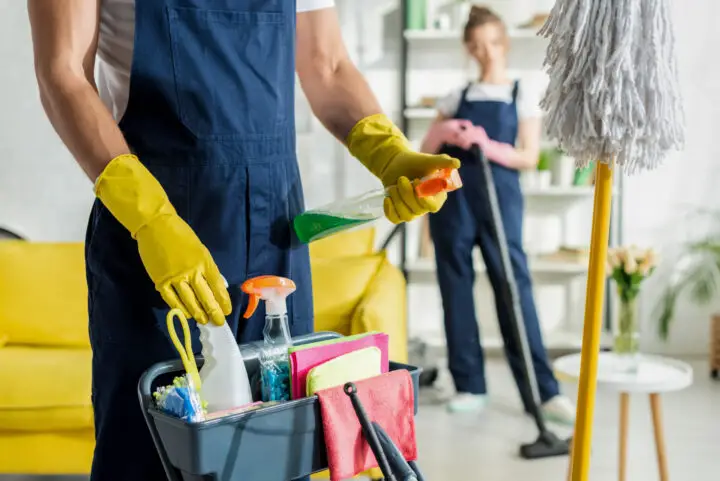
Healthcare facilities should establish regular cleaning frequencies and schedules to maintain cleanliness consistently. High-touch surfaces such as doorknobs, handrails, light switches, and patient beds should be cleaned and disinfected frequently, ideally multiple times a day. Regular cleaning should also extend to less obvious areas, including ceilings, walls, and floors, to prevent the accumulation of dust and dirt.
Specialized Cleaning for Patient Rooms:
Patient rooms require special attention when it comes to medical cleaning. These rooms can harbor a higher concentration of pathogens, and therefore, thorough cleaning and disinfection are essential. Proper cleaning of bed linens, curtains, and other textiles should be followed to minimize the risk of cross-contamination. Additionally, deep cleaning procedures, including thorough vacuuming and mopping, should be implemented on a regular basis.
Hand Hygiene and PPE:
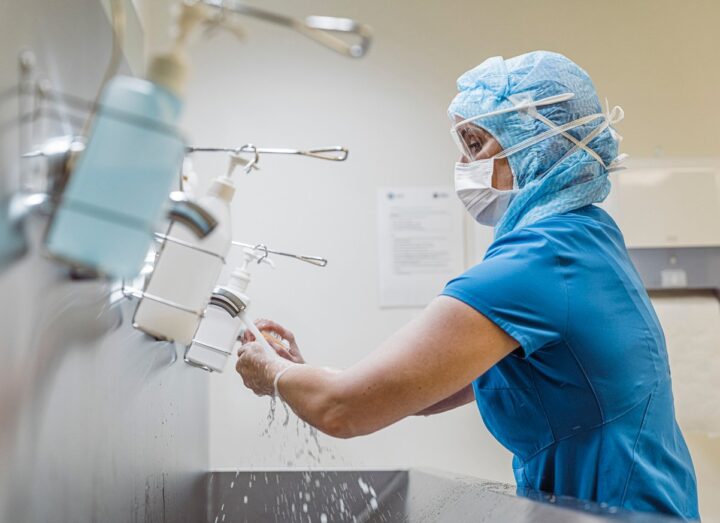
Healthcare-associated infections can often be traced back to poor hand hygiene practices. Medical cleaning staff should adhere to strict hand hygiene protocols, including regular handwashing with soap and water or using alcohol-based hand sanitizers. In addition, appropriate personal protective equipment (PPE), such as gloves and masks, should be worn to protect both the cleaning staff and the environment from potential contamination.
Collaboration and Communication:
Effective communication and collaboration between different departments within a healthcare facility are crucial for successful medical cleaning. Environmental services staff should work closely with infection control teams and healthcare providers to identify high-risk areas, implement preventive measures, and address any concerns promptly. Regular meetings and feedback sessions can help identify areas of improvement and ensure a coordinated approach to infection control.
Conclusion
The body of healthcare organizations is extensive. A circle of people has to come together to make the whole thing work. It includes the medical cleaning services, the institution, the employees, and the people.
In the end, practices that are satisfactory to the organization, its people, and the environment should be followed. Health department cleaning is a sensitive subject that includes special regulations and terms. Although carefully curating them and educating people on the same is an infallible step to revolutionizing healthcare cleaning.
